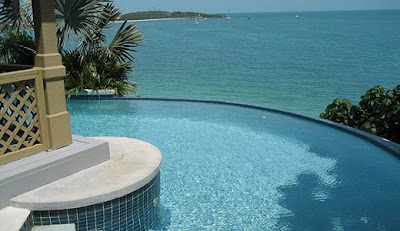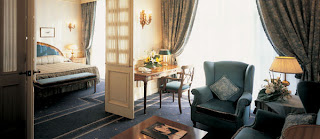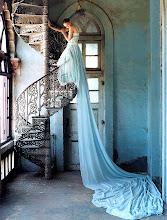Wednesday 25 June 2008
Wednesday 14 May 2008
Zino Davidoff: 'Smoke less,but better and longer'.
 “The cigar has been my life,” Zino Davidoff wrote in 'The Connoisseur’s Book of the Cigar', originally published in 1967 in French and later in five other languages. “I owe it everything: my deepest pleasure and my anguish, the joys in my work as well as my leisure time.”
“The cigar has been my life,” Zino Davidoff wrote in 'The Connoisseur’s Book of the Cigar', originally published in 1967 in French and later in five other languages. “I owe it everything: my deepest pleasure and my anguish, the joys in my work as well as my leisure time.”Zino Davidoff was born on March 11, 1906 in Kiev in what is now Ukraine. He was the eldest of four children born to Jewish tobacco merchant, Henri Davidoff. Even in his own autobiographical writings, the facts on Zino's youth are a bit hazy, as he was quite young during this time and could only piece together the some stories of his youth. Fleeing the political turmoil and anti-Semitism prevalent in Russia, his parents left some of their family behind and emigrated to Geneva in 1911 for a better life and opened their own tobacconist shop in 1912. Finishing school in 1924, he went to Latin America to learn about the tobacco trade, spending time in such places as Argentina, Brazil, and finally Cuba where he spent two years working on a plantation and first encountered Cuban cigars.
 .
.
After the War, Neutral Switzerland became a haven for wealthy tobacco customers. Zino was particularly successful in marketing the Hoyo de Monterrey Châteaux Series of Cuban cigars created for Zurich cigar distributor A Dürr Co. in the 1940s and named after great Bordeaux wines. Around this time, Zino is also credited by many as having invented the first desktop cigar humidor, in order to preserve cigars at the same conditions of humidity and temperature under which they were rolled in Havana. Davidoff also had success writing several books on cigar smoking and Cuban cigar brands.
.
In 1970, Zino sold his small but highly successful tobacco shop in Geneva to the Max Oettinger Group. Zino stayed on as Davidoff’s ambassador until his death in 1994 at the age of 88. He was survived by his wife and daughter, who remained in Switzerland and by his siblings that had since moved to other parts of the world, mainly North America. Till his last moments, Zino an avid family man, sought out to find his lost family history back in what had been the Communist U.S.S.R. Unfortunately, many historical documents had been lost and so had his search. Not much information exists on their whereabouts, but through saved notes by Zino, it has been speculated that many had defected to North America in the early to mid 70's, some under new identities and family names.

Zino Davidoff will always be remembered as a bon vivant with a highly developed appreciation for the finer things in life. As a successful businessman remained true to himself and to his principles. Zino Davidoff believed in simplicity, in the complete enjoyment of life. People who knew Davidoff knew this. They came from all over the world to share his philosophy, to enjoy his finest, purest cigars. They understood what Zino Davidoff meant  when he said: "Smoke less, but better and longer - make a cult of it, even a philosophy!"
when he said: "Smoke less, but better and longer - make a cult of it, even a philosophy!"
Luxury Note: My father-in-law had the opportunity to meet Zino Davidoff in 1984 at the shop of Geneva. He was going to the shop every time he was visiting Geneve. One day, talking with Zino, he told him that he is sometimes enjoying smoking a Toscanelli cigar, you know, these cigars that Clint Eastwood was always chewing on in those old westerns. Surprisingly, Zino told him he likes them, too, so they smoked one together. We will never know if Zino really liked them, or he was simply very polite. My father-in-law always says that Zino was a real gentleman with a great sense of humour. He was treating all his customers equally...even if they were buying just a packet of cigarettes, or the rearest cigars.
Wednesday 7 May 2008
'SIR' Sotheby's
.
Phuket,Thailand
Wednesday 23 April 2008
Influential Styles
Wednesday 16 April 2008
Aman Resorts and Amanpuri: 20 years of beauty
Wednesday 9 April 2008
The apartment of Princess Yasmin Aga Khan
 .
.In the dining room, fabric wallcovering complements one of two Kirman tapestries given to the princess by her father. A mounted Chinese vase adorns the table. I really like the colours of this dining room!

.
Artworks in the living room range from a T’ang ceramic horse to watercolors by Pavel Tchelitchew, part of a collection of Ballet Russe costume designs. The 18th century lacca contrafatta commode was made in Venice.

Interior Designer: Samuel Botero
Source: Architectural Digest
Wednesday 2 April 2008
Palazzo Pucci

But, while Emilio Pucci revolutionized couture with vibrant colors in optical patterns, the aesthetic of the clothes never entered the residence. In the brown room, for example, the silk draperies and wallcovering were made at Antico Setificio Fiorentino, a silk workshop founded by the Puccis and other families in the 17th century; Emilio Pucci took it over in the 1950s.

The dining room of the Palazzo Pucci. The late-18th-century fresco, by Luigi Ademollo, depicts Aenes leaving Troy. Marchesa Pucci and her husband added the Venetian chairs. The crystal glassware was made for the family in the 18th century.

The 17th-century bed in Emilio Pucci’s bedroom. Made in Lucca, it was among his favourite pieces. The gilt woodwork on the headboard echoes the embroidery on the canopy.

Wednesday 26 March 2008
The most beautiful libraries in the world
Guillaume de Laubier is one of France's foremost photographers of interior design. He has undertaken projects all over the world for magazines such as Elle Décoration, Architectural Digest, and Madame Figaro. Jacques Bosser, journalist and translator, has written for Architectural Digest and Connaissance des Arts as well as contributing to Le Dictionnaire international des arts appliqués et du design and Le Dictionnaire international du bijou. James H. Billington has been the Librarian of Congress in the United States for more than 15 years. www.amazon.co.uk
Wednesday 19 March 2008
An egg for Easter
Happy Easter to all! See you next week...
Hotel Cipriani: A Venetian Affair
 Even if Carnival came to its end, there is always a good excuse to visit Venice. The city has always been a centre for architecture, the fine arts and the world's most exquisite crafts. The history of La Serenissima is a story best told by the lives of two of its' most well known citizens; Marco Polo, the merchant and explorer of the 13th century; and Giacomo Casanova, the seducer and lover of 18th century Venice. One used his mastery to explore the world and trade in the most precious goods, thus creating a great wealth. Whilst the other one worshipped all that is beautiful and romantic. Together, these two forces of industry and art have over many centuries created a truly magical city.
Even if Carnival came to its end, there is always a good excuse to visit Venice. The city has always been a centre for architecture, the fine arts and the world's most exquisite crafts. The history of La Serenissima is a story best told by the lives of two of its' most well known citizens; Marco Polo, the merchant and explorer of the 13th century; and Giacomo Casanova, the seducer and lover of 18th century Venice. One used his mastery to explore the world and trade in the most precious goods, thus creating a great wealth. Whilst the other one worshipped all that is beautiful and romantic. Together, these two forces of industry and art have over many centuries created a truly magical city.Having found the perfect hotel guarantees your pleasant and beautiful stay in Venice. It was in 1956 when Giuseppe Cipriani presented his project for a new hotel to his partners. His idea was to build a small palazzo very near to St. Mark Square, but at the same time distant enough to maintain privacy. The result was an amazing palazzo in the Giudecca island in Venice. Created to provide the very best of Venetian hospitality, Hotel Cipriani incorporates the most luxurious accommodation, the best service and the finest cuisine in an atmosphere of calm and seclusion.


Cipriani-style food is simple, fresh and perfectly prepared: pasta and pastries are made in the hotel daily, as well as the breakfast croissants. Indeed a cuisine that meets international standards of excellence. The chef, Renato Piccolotto works in the hotel since 1970. His philosophy is to offer his guests authentic Venetian dishes in which the flavour of the ingredients is given pride of place. I do recommend the Ravioli filled with Eggplant and Mozzarella with Tomato and Fresh Oregano Sauce, and the Roast Rack of Lamb in a Crust of Herbs.
Julia Roberts, Martin Scorsese, Uma Thurman, Angelina Jolie and Brad Pitt, George Clooney, Johnny Depp, Harrison Ford, and Donatella Versace are some of the people that stayed in the Hotel Cipriani.
Hotel Cipriani is an experience that few should miss. Just few hotels can match the splendour of this hotel.
© Orient-Express Hotels
Wednesday 12 March 2008
Rolls Royce: Phantom Drophead Coupe
Just 200 Dropheads will leave the factory each year. Each car is individually built by highly skilled craftsmen (100 craftsmen working on wood alone). It reaches 96,5 km/h in less than 5,7 seconds, and it can reach a maximum velocity of 240 km/h.
The inspiration for this car came from classic Riva powerboats and J-Class yachts. The resulting 100EX design study is elegance combined with leather, teak and aluminium. No other car can match the beauty and elegance of this Rolls.

Wednesday 5 March 2008
Principe di Savoia: La Dolce Vita a Milano
 Some days after Milano Fashion Week. A great occasion for talking about a great hotel in Milano, the Hotel Principe di Savoia. Three months ago I had to go to Milan for the presentation of a new line a brand was going to launch. I decited to stay in Principe di Savoia, as it was very near the place I had to go for my work. Member of The Leading Hotels of the World, right in the Piazza della Repubblica, the largest plazza of the city, this hotel indeed satisfied my expectations. With a very high standard of services and facilities, you will not leave this hotel unsatisfied. Since 1927 when the hotel opened its doors, until today, Principe di Savoia continues the tradition of being considered as one of the best and most luxurious hotels in Milan.
Some days after Milano Fashion Week. A great occasion for talking about a great hotel in Milano, the Hotel Principe di Savoia. Three months ago I had to go to Milan for the presentation of a new line a brand was going to launch. I decited to stay in Principe di Savoia, as it was very near the place I had to go for my work. Member of The Leading Hotels of the World, right in the Piazza della Repubblica, the largest plazza of the city, this hotel indeed satisfied my expectations. With a very high standard of services and facilities, you will not leave this hotel unsatisfied. Since 1927 when the hotel opened its doors, until today, Principe di Savoia continues the tradition of being considered as one of the best and most luxurious hotels in Milan.The hotel offers a variety of choices for dining-in experiences. Breakfast as well as afternoon tea and an à la carte menu are available all day at the Lobby Lounge. Indeed a very elegant café for some pastries and traditional English tea, as well as à la carte all-day dining. It has wonderful hand painted decorations, and windown overlooking the beautiful garden.

Fabrizio Cadei, the executive chef, has really prepared a fabulous menu. For starters I do recommend the duck fois gras terrine with pistachios, and the tagliolini pasta with langoustine ragout. The risottos are also fantastic. For the main course, I found the confit veal breast just delicious. For the fish eaters, there is an interesting selection of fish. For the dessert, as I love tiramisu, I ordered the trilogy of tiramisu…simply a dream! You just have to try it...it is all about a dining experience.
.
On the top floor of the hotel, you can enjoy Club 10 Fitness and Beauty Centre with its breathtaking view of the city. There is a really big pool area, gymnasium, and a beauty treatment area. After a long day, you will surely enjoy a thai massage. The best is the make up and hairdresser service. You are ready to go out in an amazing way.
Apart from the fully equiped business centre the hotel has, the tours and excursion services, it also offers complimentary service in a limousine to the centre of the city. This is indeed a very convenient service.Some of the very famous clients of the hotel were Gabriele d’Annunzio, the Duke of Windsor, Gloria Swanson, Charlie Chaplin, Josephine Baker, Eva Peron, Aristotle Onassis, Aga Khan and Maria Callas. Now a days the Hotel Principi di Savoia is still a place where the international elite of business and leisure meet in an atmosphere of class and sophisticated style.
Let yourself go...Live your own Dolce Vita!


































